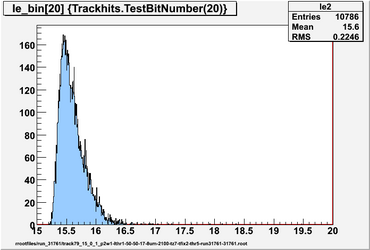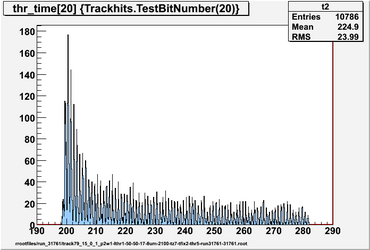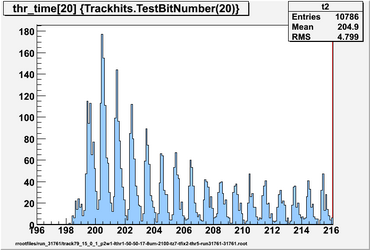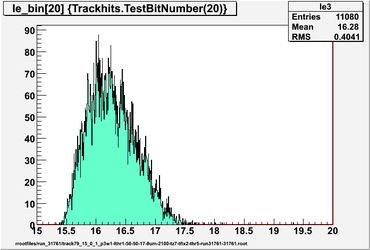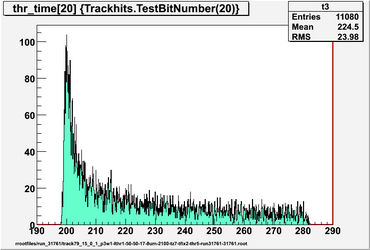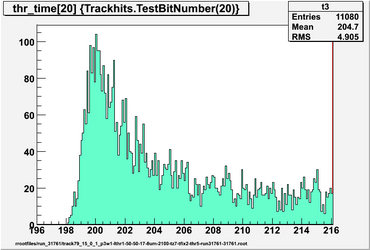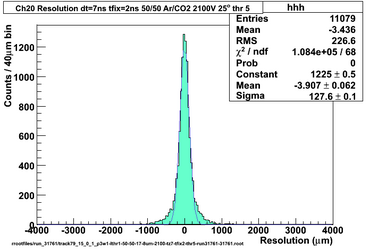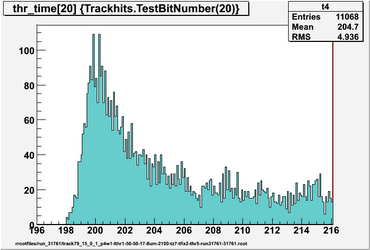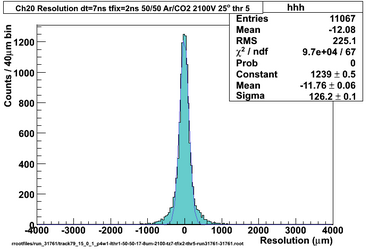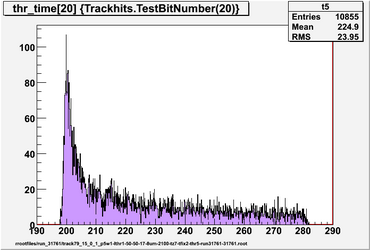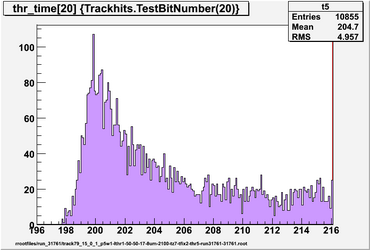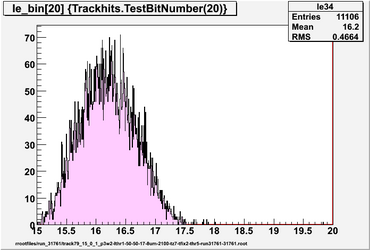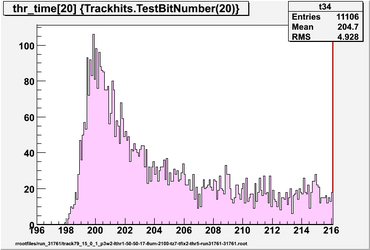Difference between revisions of "CDC prototype more drift times"
| Line 5: | Line 5: | ||
<br> | <br> | ||
| − | Le_bin is the timing threshold crossing in fADC samples (8ns each) | + | In the histograms below...<br> |
| − | Le_bin=0 corresponds to (15 + | + | The hit threshold is 5sigma and the (lower, earlier) timing threshold is 1sigma above pedestal. <br> |
| + | Le_bin is the timing threshold crossing in fADC samples (8ns each), relative to the hit threshold crossing time.<br> | ||
| + | Le_bin=0 corresponds to (15 + pedestal_lead) samples before the hit threshold crossing bin.<br> | ||
Le_bin=15 corresponds to pedestal_lead samples before the hit threshold crossing, this is where the pedestal window ends.<br> | Le_bin=15 corresponds to pedestal_lead samples before the hit threshold crossing, this is where the pedestal window ends.<br> | ||
| − | + | The 1-sigma threshold time is the bin where the 1-sigma timing threshold is crossed, relative to the trigger time, | |
| − | + | ie the hit threshold crossing bin - 15 - pedestal_lead_time + le_bin. | |
| − | + | 20 + pedestal_lead_time values are used for upsampling, starting at le_bin=0 and ending 5 samples after the hit threshold crossing bin. | |
| + | <br><br> | ||
{| border="0" cellpadding="2" | {| border="0" cellpadding="2" | ||
Revision as of 12:52, 8 March 2012
Drift time histograms for various local pedestal points
The local pedestal is taken to be the mean of a number of samples (pedestal window) ending a certain number of samples (pedestal lead time) before the bin where the hit crossing threshold is exceeded. Typically for a hit threshold of 5x pedestal sigma, a window of 1 or 2 samples ending at a lead time of 3 or 4 samples works well. For a window of 1 sample and lead time of 3 samples, the pedestal value is taken to be equal to the fADC value 3 samples before the hit threshold is exceeded.
Also see CDC_prototype_more_on_timing
In the histograms below...
The hit threshold is 5sigma and the (lower, earlier) timing threshold is 1sigma above pedestal.
Le_bin is the timing threshold crossing in fADC samples (8ns each), relative to the hit threshold crossing time.
Le_bin=0 corresponds to (15 + pedestal_lead) samples before the hit threshold crossing bin.
Le_bin=15 corresponds to pedestal_lead samples before the hit threshold crossing, this is where the pedestal window ends.
The 1-sigma threshold time is the bin where the 1-sigma timing threshold is crossed, relative to the trigger time,
ie the hit threshold crossing bin - 15 - pedestal_lead_time + le_bin.
20 + pedestal_lead_time values are used for upsampling, starting at le_bin=0 and ending 5 samples after the hit threshold crossing bin.
colors:851,836,426,871,606
